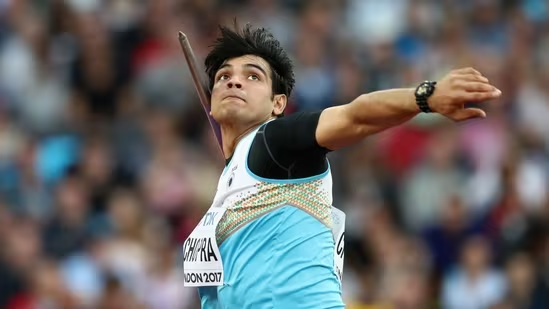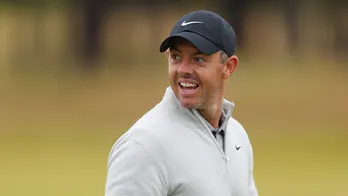How three foreign coaches changed our javelin throwers
Klaus Bartonietz, bow in hand, takes aim at an apple on a tree. He draws the string with some effort and shoots. The arrow misses its target, inviting a scowl from Bartonietz, one of the world’s pre-eminent experts in biomechanics.  PREMIUM
PREMIUM
Few other people in the world have done more work in the field of throws than this man, standing in an orchard in Germany, trying to explain why the human body must become a bow to hurl the javelin. In the javelin world, he is simply known as “the professor”.
“For the javelin thrower, the body is the bow,” Bartonietz says in a YouTube video. “Bending the bow is what the thrower has to do, using the elasticity of the body.”
The javelin thrower, he explains, must develop tremendous suppleness and power in the elastic components of the body—muscles, ligaments and fascia. It’s the ability to build tension here and then release it that gives flight to the spear.
Another video, this time of Bartonietz’s current student Neeraj Chopra, India’s strongest contender in track & field, shows just how the body can turn into a bow. Chopra stands tall with his arms raised above his head, holding a weighted ball.
He starts dropping his knees towards the ground. With his knees inches from the ground, his heels in the air, and all his weight on his toes, Chopra begins to bend backwards. With his entire body balanced just on his toes, he manages to arch into a full bridge, with his arms straight behind his head, the weighted ball half an inch from the ground—this is the bow string stretched to its limit. If getting into this hyperextended position is not confounding enough, Chopra manages to “release the string” too—he unfurls like some dreamt up sequence in a Kung Fu movie and hurls the ball.
Having strong arms is just one, small, part of throwing the 800gm javelin.
That’s the key lesson that three javelin coaches brought to India’s aspiring throwers to turn them into elite athletes: the late Gary Calvert, the Australian thrower turned coach who took Chopra to a historic gold in the World Junior Championships in 2016 (Calvert died of a heart attack in Beijing in 2018 while working as the national coach for China’s javelin team).
Germany’s Uwe Hohn, the only man to ever throw the javelin 100m and more (the design for the spear was changed in 1984, the year Hohn made his 100+ effort, to make it harder to throw it that far). And Bartonietz, who is also from Germany.
Calvert had come to India in 2016, Hohn in 2017 and Bartonietz in 2018.
To throw the javelin far enough for an Olympic medal, every aspect of this highly technical event needs to come together as perfectly as possible—the way the spear is gripped, the acceleration in the run up, getting the body into a sideways position with crossover steps without losing too much momentum, pulling the javelin behind with the shoulder at maximum stretch, “blocking” or breaking the momentum with the non-throwing side so that all of that energy can get transferred into the throwing arm, the trunk rotation and then the timing of the release.
In a cricket-crazy country, it’s not that hard to understand the science and beauty of the javelin throw—it has strong resemblances with fast bowling as well as throwing from the deep. (Perhaps the BCCI should consider hiring Hohn, whose time as India coach is coming to a bitter end because of disagreements with athletics administrators).
It is only with the coming of Calvert in 2016 that Indian throwers began to get modern technical inputs.
It immediately resulted in Chopra leaping onto the global stage. He goes to Tokyo, accompanied by Bartonietz, as a genuine medal contender, and he will have two compatriots—Annu Rani and Shivpal Singh competing with him too. That’s quite the feat—India has never had a medal contender in javelin, and the last time an Indian even qualified for the event was in 2000.
To track the rise of Indian javelin, look no further than the 2017 Athletics World Championships, where Chopra, Rani and Davinder Kang competed from India. It was the first time in over a decade that India had a javelin thrower at the worlds. Four years later, it was Rani and Singh at the 2019 Worlds in Doha. Chopra was recovering from elbow injury then, but Rani qualified for the final and finished 5th with a national record throw of 62.43.
With Bartonietz, Chopra has been working on improving his release angle and the direction of his throw in the lead up to Tokyo.
“If the release angle is right, the javelin covers maximum distance, or else the power you put behind it is wasted,” says Chopra.
In Finland at the Kuortane Grand Prix recently, where 2017 world champion Johannes Vetter’s spear crossed 93.59m, Chopra’s best was 86.79. He still won bronze behind Vetter and Rio Olympics silver medallist Keshorn Walcott (89.12m). Chopra had not competed against such a strong field in more than two years. 2017 world champion Johannes Vetter is in prime form with consistent throws beyond 90m this season. Chopra’s best this season has come at the Indian Grand Prix in March (88.07m).
Chopra and Bartonietz believe a micro adjustment in the release angle will lead to the thrower’s javelin going less height but gaining distance.
“I have been working on this problem. Also, my javelin used to go towards the left, so distance would be less and there are chances of a foul throw if it goes outside the sector. I have improved on that front. I am launching it straighter now and need to keep working on it.”
Rani’s technical advancements have also been centred around the release angle.
“I had many faults in my technique,” Rani says. “I slowed down in the last few steps and my release angle was high. For the throw where I came close to getting the (Olympic) A qualification mark in Patiala, the release angle was 50 degrees. It needed to be around 35 degrees.”
Like Chopra, Rani’s rise too has been spectacular: from a small village called Bahadarpur near Meerut to Tokyo, via medals at the Asian and Commonwealth Games.
“Everything has been a struggle in my life,” she says. “In the village there was no facility to train, no equipment, no ground and I didn’t know about diet. My parents could not support much financially because we are a big family.”
In Tokyo, she will be hoping for a culmination of that struggle at the point of an airborne spear.
Experience unrestricted digital access with HT Premium
Explore amazing offers on HT + Economist Start 14 Days Free Trial Already Subscribed? Sign In
Disclaimer: The copyright of this article belongs to the original author. Reposting this article is solely for the purpose of information dissemination and does not constitute any investment advice. If there is any infringement, please contact us immediately. We will make corrections or deletions as necessary. Thank you.







